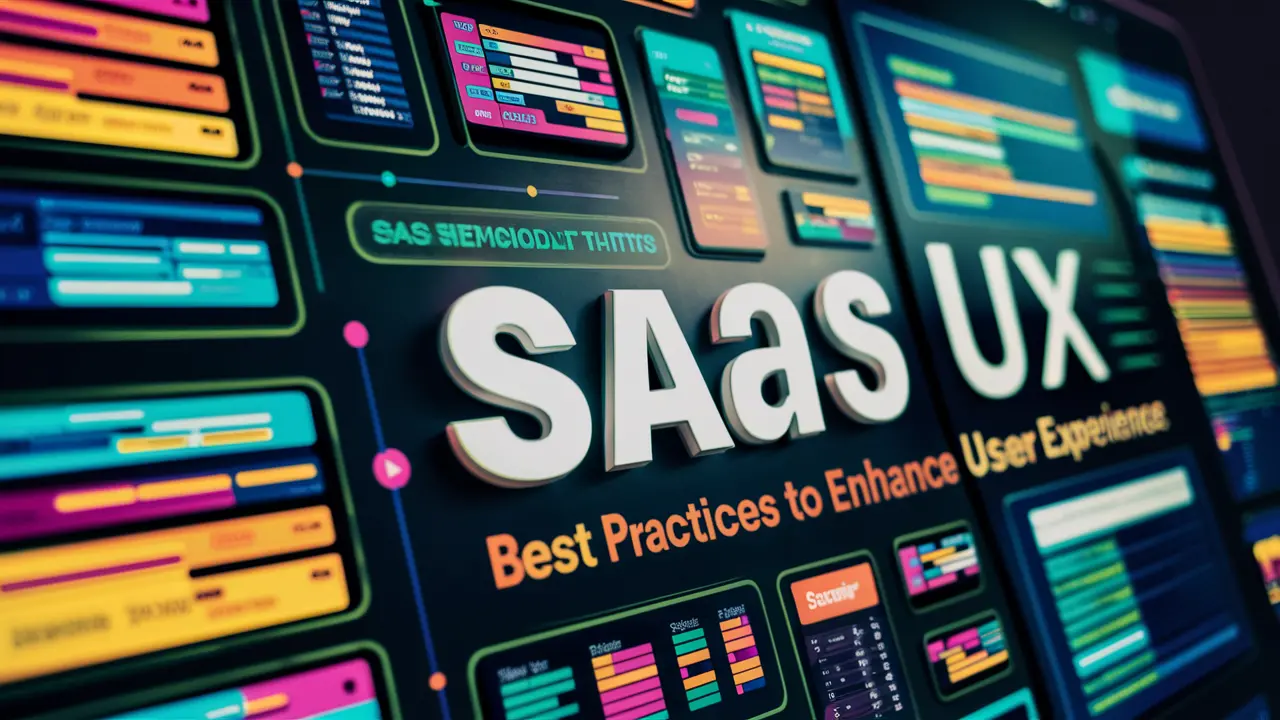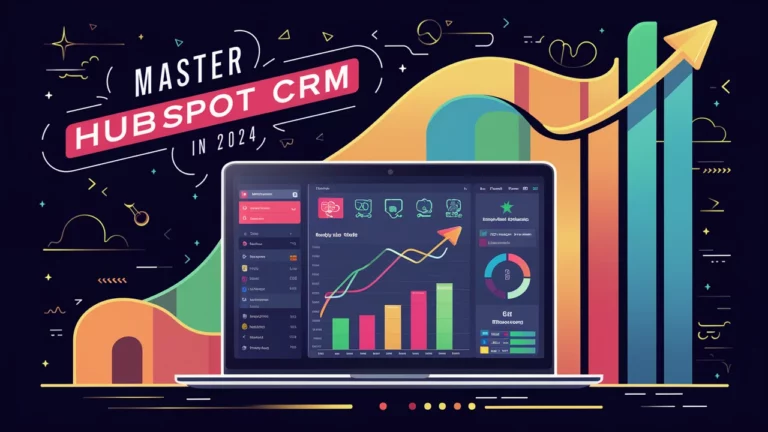SaaS UX: Best Practices to Enhance User Experience

For Software as a Service (SaaS) products, SaaS UX plays a crucial role in determining the application’s success. Utilizing best practices in SaaS UX design is essential to ensure that users have a seamless and enjoyable experience when using the software, encouraging them to continue using your product. By focusing on elements such as intuitive user interfaces, responsive design, and user-centered design principles, SaaS companies can significantly enhance their overall user experience.
Our audience supports Ahcrypto. When you click on the links on our site, we may earn an affiliate commission at no extra cost to you. Learn More.
Key Takeaways
Design Principles in SaaS UX
Design principles are fundamental guidelines that shape the development of SaaS applications. User-centered Design is a core principle that focuses on designing products to meet users’ needs and preferences. Responsive Design ensures that the SaaS application adapts to different devices and screen sizes, providing users with a consistent experience across platforms and epitomizing best practices for SaaS.
Stay Updated with the Latest Digital Marketing Tips!
Subscribe to our newsletter and receive our exclusive guide, “Top 10 Digital Marketing Strategies for Success,” straight to your inbox
User-Centered Design
User-centered Design revolves around putting users’ needs and preferences at the forefront of the design process. By incorporating user research and testing, UX designers can create interfaces tailored to meet user expectations and enhance overall satisfaction.
Responsive Design
Responsive Design is crucial in today’s digital landscape, where users can access SaaS products on various devices. Designing for responsiveness ensures that the application functions seamlessly on desktops, tablets, and smartphones, improving user engagement and satisfaction.
Importance of UX Design in SaaS Products

The importance of UX design in SaaS products cannot be overstated. A well-designed user interface and experience can help users navigate the application quickly, increasing customer satisfaction and retention. Implementing effective onboarding processes and incorporating user feedback are critical strategies in creating a successful SaaS UX design that resonates with users, illustrating the impact of UX research on customer experience.
Good UX and Its Impact
Delivering a good user experience (UX) is crucial for the success of any product, especially in the digital realm. This highlights the importance of great UX in SaaS products. A positive UX can increase user engagement, customer satisfaction, and retention. By focusing on designing intuitive user interfaces and incorporating user-centered design principles, companies can create a user-friendly experience that resonates with their target audience.
Designing for SaaS Applications
Designing for Software as a Service (SaaS) applications has unique challenges and opportunities. It’s essential to design for responsiveness to ensure the application works seamlessly across different devices and screen sizes. User research and testing play a vital role in understanding user needs and preferences and guiding the design process for SaaS platforms.
User Research and Testing
User research and testing are essential components of UX design, particularly in the context of SaaS products. By conducting user interviews, gathering feedback, and analyzing user behavior, designers can make informed decisions to create a tailored user experience. Testing the interface with real users helps identify usability issues and make necessary improvements, a fundamental part of UX research for SaaS apps.
Why is UX design important in SaaS?
UX design is paramount in Software as a Service (SaaS) products as it directly impacts user satisfaction and overall product success. A well-designed UX can help users navigate the platform effortlessly, improving customer retention and loyalty. By focusing on UX best practices, SaaS companies can enhance the usability and effectiveness of their applications, ultimately driving business growth and success.
Useful Figma Plugins for UX Designers

Figma plugins can significantly aid UX designers in streamlining their design processes and enhancing efficiency. Plugins like ‘Content Reel’ for generating dummy content and ‘User Flows’ for creating user flow diagrams can be valuable tools for designing intuitive user interfaces in SaaS applications, reflecting the utility of good SaaS UX design. By leveraging these Figma plugins, designers can collaborate seamlessly, iterate quickly, and deliver exceptional user experiences in their SaaS designs.
Gen-AI design process: Rethinking the traditional approach for next-gen UX
In the rapidly evolving user experience (UX) design landscape, the Gen-AI design process stands out as a revolutionary approach combining artificial intelligence (AI) with traditional design practices. By leveraging AI algorithms to analyze user behavior, preferences, and trends, designers can gain valuable insights to create highly personalized and intuitive user experiences. This innovative approach enhances user engagement, helps predict user needs, and adapts the Design in real-time, thus setting a new standard for next-generation UX.
Implementing Design Best Practices
Effective Onboarding Process
An effective onboarding process is essential for guiding users through the initial stages of using a SaaS product. It involves clearly and engagingly introducing users to the key features and functionalities, reducing the learning curve and boosting user confidence. By incorporating interactive tutorials, informative tooltips, and progressive disclosure techniques, SaaS companies can enhance the onboarding experience, leading to higher user retention rates and overall satisfaction.
Successful SaaS Products
The success of software-as-a-service (SaaS) products hinges on delivering exceptional user experiences that meet customers’ evolving needs. Successful SaaS products offer value through their core functionalities and prioritize usability, accessibility, and seamless integration with other tools, aligning with best practices for SaaS UX design. By continuously refining the user interface, optimizing performance, and soliciting user feedback, SaaS companies can ensure that their products remain competitive and resonate with their target audience.
Improving SaaS UX through Design Trends
Staying abreast of current design trends is crucial for enhancing SaaS user experience (UX) and staying ahead of the competition. Design trends such as dark mode, micro-interactions, minimalist aesthetics, and voice user interfaces can add a modern touch to SaaS applications, making them more visually appealing and user-friendly. By incorporating these trends thoughtfully and aligning them with user preferences, SaaS companies can create innovative and engaging experiences that set their products apart in the market.
Level up your SaaS UX design skills with user research and testing.

Enhancing user experience (UX) in Software as a Service (SaaS) products requires honing skills through robust user research and testing methodologies, which are vital UX components for SaaS. By delving deep into user behavior, preferences, and pain points, designers can develop insights that drive impactful design decisions. User research involves techniques like interviews, surveys, and usability testing to understand user needs comprehensively.
Testing plays a pivotal role in validating design choices and identifying areas for improvement. Conducting usability tests with real users helps uncover usability issues, gather feedback, and refine the user interface to ensure a seamless experience. Iterative testing throughout the design process ensures that the final product is tailored to meet user expectations and deliver optimal user satisfaction.
How much does it cost for UX/UI Design For SaaS products?
Investing in UX/UI design for SaaS products is essential for creating user-centric applications that drive engagement and loyalty, reinforcing the importance of UI design in SaaS apps. The cost of UX/UI design for SaaS products varies depending on factors like project scope, complexity, and design agency rates. Typically, the price ranges from a few thousand to tens of thousands of dollars, with larger projects requiring more extensive design resources and expertise.
Improve SaaS Applications with Review and Iteration
Constantly refining and iterating SaaS applications is critical to enhancing their usability and effectiveness. Regularly reviewing user feedback, analyzing metrics, and conducting A/B testing allows designers to identify areas for improvement and implement impactful changes, a testament to the continuous improvement cycle in good SaaS UX design. By embracing a culture of constant improvement, SaaS companies can optimize user experiences, drive customer satisfaction, and stay ahead in a competitive market.
Keep updated on all of our latest tips here.
FAQ

Scott Evans
Hey there, I’m Scott Evans, your friendly guide at AhCrypto! I’m all about breaking down complex SaaS, AI, and tech topics into digestible insights. With me, you’re not just keeping up with the tech world; you’re staying ahead of the curve. Ready to dive into this exciting journey? Let’s get started!






